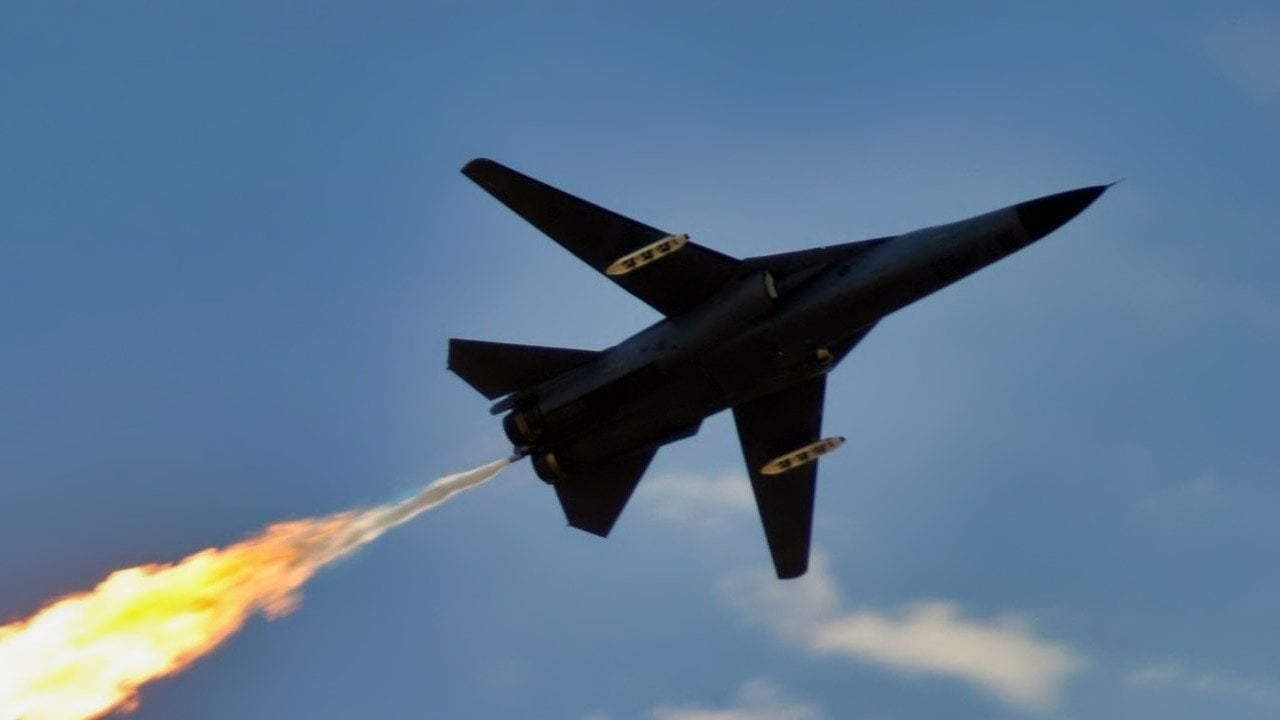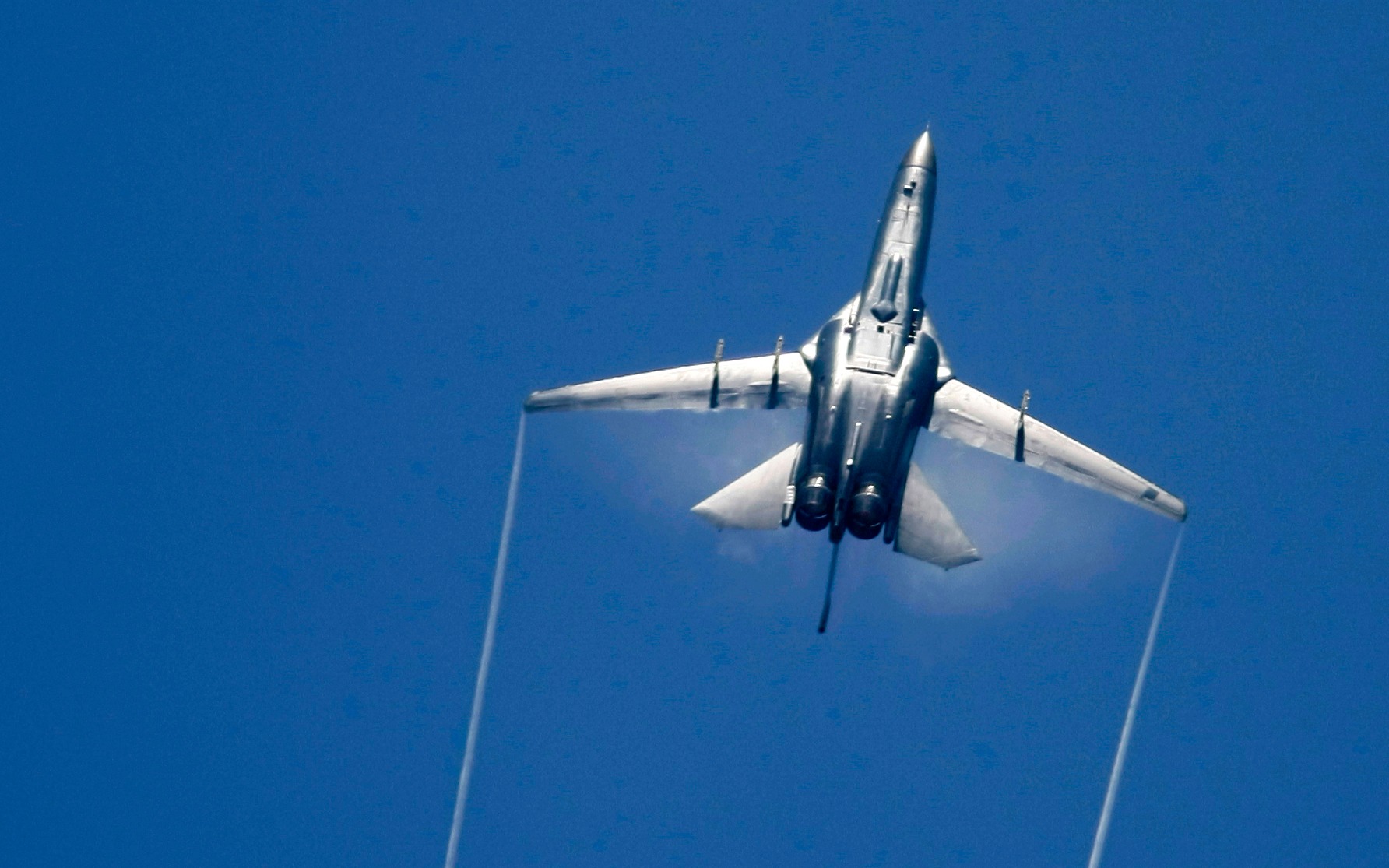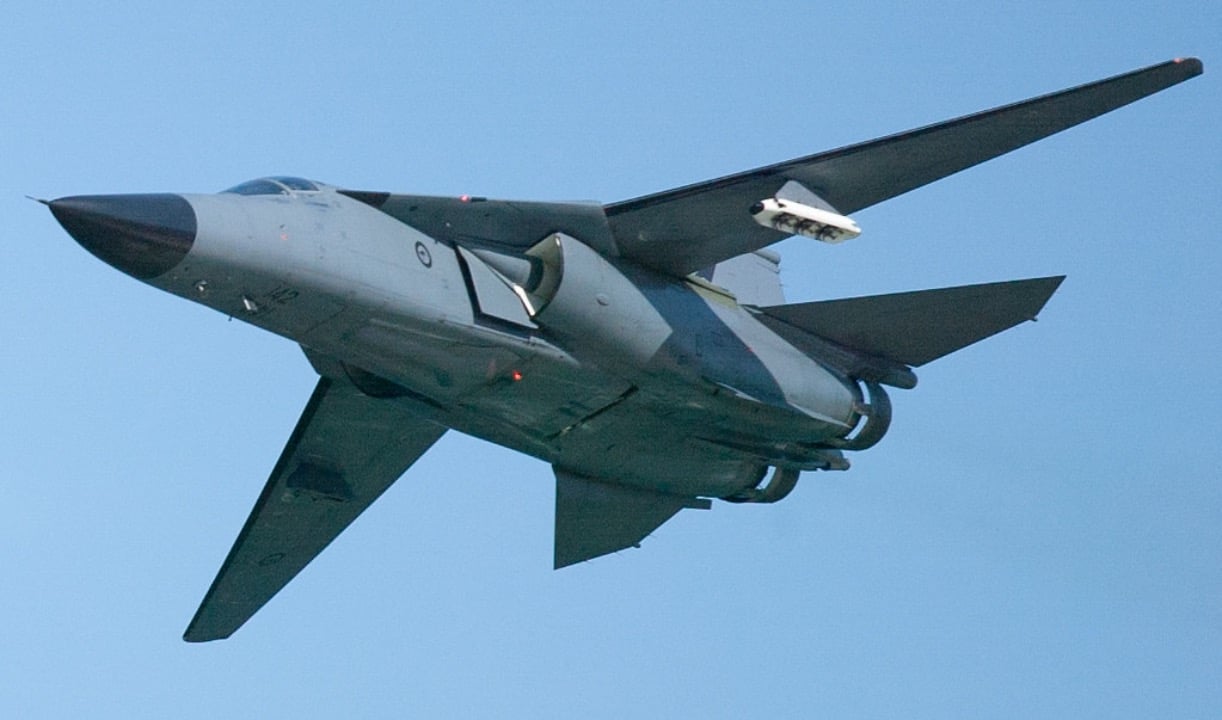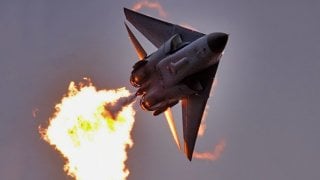The F-111 Aardvark Could Destroy Anything on the Ground
The F-111 Aardvark earned a significant place in aviation history despite early controversy and mixed reviews. Initially facing skepticism due to its dual-role design and political influences, the F-111 proved its worth in combat, particularly in Vietnam and Operation Desert Storm.
What You Need to Know: The F-111 Aardvark earned a significant place in aviation history despite early controversy and mixed reviews. Initially facing skepticism due to its dual-role design and political influences, the F-111 proved its worth in combat, particularly in Vietnam and Operation Desert Storm.

-Known for its advanced radar and terrain-following capabilities, it flew dangerous, long-range missions, notably Operation Eldorado Canyon in Libya. Though criticized by some, many pilots praised its effectiveness, and it played a crucial role in several U.S. military victories.
-With 563 built, the Aardvark remains an underappreciated legend rather than the failure some initially claimed.
F-111 Aardvark: A Failure or Underrated and Underappreciated?
To zoologists, the aardvark is a medium-sized, burrowing, nocturnal mammal native to Africa with a long, pig-like snoot used for sniffing out the insects that it feeds upon.
In the military aviation context, the Aardvark is the name of a U.S.-made Cold War supersonic multirole strike aircraft that generated quite a bit of controversy, and many pundits deemed a failure. However, just like the horror stories about the F-35 being a supposed “failure” are blown way out of proportion when you look at the Big Picture, the same could be said about the current topic at hand. Let us say hello to the F-111 Aardvark and give this “flying ant bear” a fair shake, or at least a fair & balanced perspective anyway.
F-111 Aardvark Early History Growing Pains
The General Dynamics F-111 Aardvark made her maiden flight on December 21, 1964. She entered into official operational service with the U.S. Air Force (USAF) on December 21, 1964 and followed suit with the Royal Australian Air Force (RAAF) in 1973; the Yanks nicknamed her the “Vark” for short, whilst the Aussies nicknamed her the “Pig.”
As my colleague Harrison Kass notes the Vark, “was a groundbreaking aircraft for the U.S. Air Force, debuting in the late 1960s with advanced features like sweep-wing technology, afterburners, and a terrain-following guidance system.”
So then, why all the controversy behind the F-111’s development, as well as all the accusations of it being a failure? Well, it certainly didn’t help that it was the brainchild of arguably the most hated U.S. Secretary of Defense (SECDEF) of all time, Robert S. McNamara. In 1961, Mr. McNamara came up with the Tactical Fighter Experimental program, intended to meet the U.S. Air Force’s requirement for a long-range ground-attack and close-air-support plane (CAS) as well as the U.S. Navy’s requirement for an interceptor with loitering capabilities for fleet defense. However, the former entity only accepted the plane with extreme reluctance, whilst the latter rejected it outright.

Operational Performance
All of those misguided motivations and political posturing behind the Aardvark aside, the warbird managed to last thirty-two years in service with the USAF and thirty-seven years with the RAAF. And along the way, it amassed a pretty decent combat record.
Yes, on the one hand, some pilots truly hated it; for example, test pilot George Marrett bluntly called it “the worst aircraft I have ever flown.” But on the other hand, you had Aardvark drivers like Richard Crandall, who, writing in a July 2020 article for The WarZone (TWZ) notes that when the plane was first blooded in combat in the unforgiving the Vietnam War, “The radar was the best in the fighter world at the time.”
To back up his claim, Mr. Crandall points out that as a result of the Aardvark’s successful participation in 1972’s Operation Linebacker and Linebacker II , 154 low-level sorties flown during the latter, which sent the North Vietnamese back to the peace table and nearly won the war for the United States, as much as mainstream academics refuse to acknowledge this, the communist forces nicknamed the aircraft “Whispering Death” (not to be confused with “Whistling Death,” which supposedly is the nickname conferred by the Imperial Japanese upon the USN/USMC Vought F4U Corsair prop-driven fighter plane of WWII).
Now, for anyone who might accuse Mr. Crandall of being a blind homer “Love is blind,” right?), perhaps an outsider’s assessment is warranted here. For that, we turn to the Federation of American Scientists (FAS), which asserts that, “Despite the many problems, the F-111 turned out to be one of the most effective all-weather interdiction aircraft in the world… The F-111 series of combat aircraft established the best safety record of any of the aircraft in the Century Series of fighters (F-100 to F-110), only seventy-seven aircraft being lost in a million flying hours.”
And then there was the 1991 Persian Gulf War AKA Operation Desert Storm. Everybody knows that America’s biggest killer of then-Iraqi dictator Saddam Hussein’s main battle tanks (MBTs) was the legendary A-10 Warthog, right?
In the immortal words of ESPN College GameDay’s Lee Corso, “Not so fast, my friend!” As noted by Dario Leone of The Aviation Geek Club:
“Using PAVE Tack targeting pods combined with LGBs, the F-111 Aardvarks took out over 1,500 Iraqi armored vehicles. By contrast, the A-10 Warthogs destroyed “only” 900 Iraqi military vehicles.”

Last but not, in between Vietnam and the Persian Gulf, there was the Aardvark’s most famous combat mission: Operation Eldorado Canyon, an airstrike ordered by then-U.S. President Ronald Wilson Reagan against then-Libyan strongman Muammar Gaddafi's Libya on April 15, 1986, in retaliation for a West Berlin discotheque bombing ten days earlier.
In what turned out to be the longest fighter combat mission in history – spanning 6,400 miles (10,300 km) and thirteen hours, eighteen F-111s of the 48th Tactical Fighter Wing (TFW) along with twenty-five Navy aircraft ended up destroying three to five of Gaddafi’s IL-76 transport planes destroyed along with fourteen MiG-23 fighters, two helicopters, and five major ground radars, and forty-five Libyan troops and officials killed.
In exchange, one Aardvark was lost, resulting in the tragic deaths of Captains Fernando L. Ribas-Dominicci and Paul F. Lorence.
Some “failure,” eh?
Where Are They Now?
Out of 563 F-111s built, roughly forty-seven survive today. One such specimen is on display at the National Museum of the United States Force at Wright-Patterson AFB, Ohio.
About the Author:
Christian D. Orr is a Senior Defense Editor for National Security Journal (NSJ). He is a former Air Force Security Forces officer, Federal law enforcement officer, and private military contractor (with assignments worked in Iraq, the United Arab Emirates, Kosovo, Japan, Germany, and the Pentagon). Chris holds a B.A. in International Relations from the University of Southern California (USC) and an M.A. in Intelligence Studies (concentration in Terrorism Studies) from American Military University (AMU). He has also been published in The Daily Torch , The Journal of Intelligence and Cyber Security, and Simple Flying. Last but not least, he is a Companion of the Order of the Naval Order of the United States (NOUS).
Image Credit: Creative Commons and/or Shutterstock.


